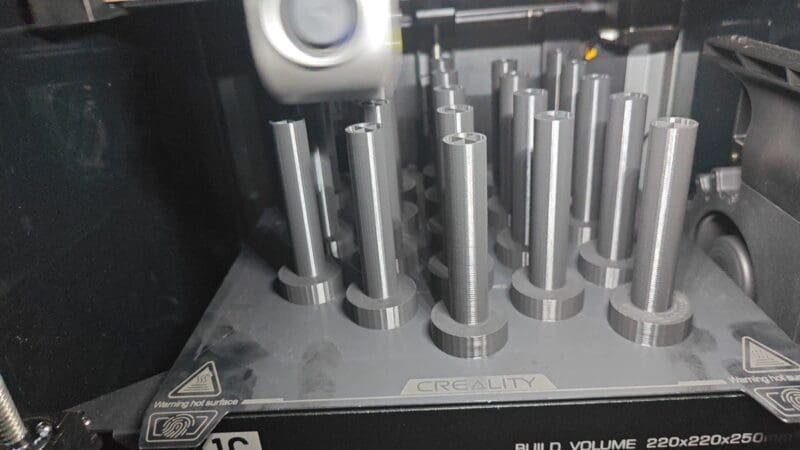3D Printing Security: What the CrowdStrike Event Revealed

On July 19, 2024, an unexpected global IT system failure hit like a hurricane, causing widespread paralysis for numerous businesses and organizations.
The source of this crisis was a flawed software update released by cybersecurity giant CrowdStrike, which affected millions of Microsoft Windows systems worldwide. A large number of Windows computers experienced the infamous blue screen of death.
As a media outlet focused on 3D printing technology and industry development, 3DPadvisor believes this incident not only exposed the vulnerabilities in the current cybersecurity framework but also sounded a warning bell for the rapidly developing 3D printing industry.
The Butterfly Effect: From IT Failure to Industry Chain Crisis
When CrowdStrike CEO George Kurtz stood in front of the cameras and admitted that the recent failure was due to a flaw in their Falcon content update, he probably did not foresee that this “small error” would trigger such a massive chain reaction.
“This only affects Windows hosts. Mac and Linux systems are not impacted. This is not a cyberattack or security event,” Kurtz explained.
However, the reality proved that even a minor technical defect could plunge the world into chaos. The aviation industry was hit first. Major airlines like American Airlines, Delta Air Lines, and United Airlines announced groundings, leaving tens of thousands of passengers stranded at airports.

The healthcare system was not spared either, as several hospitals in Germany had to cancel non-emergency surgeries, putting patients’ lives at risk. Financial markets also took a severe hit, with the London Stock Exchange temporarily paralyzed and the global financial system teetering on the brink. Even more concerning, 911 emergency call centers in several U.S. states experienced outages, posing a significant threat to public safety.
This series of cascading effects reminds us of the famous butterfly effect. A seemingly insignificant software update flaw can escalate into a global crisis within a few hours. This not only highlights the fragility of our highly interconnected world but also forces us to reconsider the potential risks that come with technological advancements.
HP and CrowdStrike: 3D Printing-Related Cases Affected
In the wake of this global IT crisis, the strategic partnership between HP and CrowdStrike has caught the attention of 3DPadvisor. As a leading company in the 3D printing sector, HP’s actions significantly impact the entire industry. Notably, HP is the only major 3D printing-related company publicly known to have a partnership with CrowdStrike.
Just before the crisis erupted, in June 2024, HP and CrowdStrike had announced a major strategic collaboration aimed at providing comprehensive security for end-to-end AI innovations, including protection for large language models (LLMs).
At the time, Fidelma Russo, HP’s Executive Vice President and Chief Technology Officer for Enterprise Hybrid Cloud, confidently stated: “Our strategic partnership with CrowdStrike, combined with our OpsRamp observability technology, provides complete endpoint security for AI applications running on HP Private Cloud AI.”
However, the situation has dramatically changed. Although there is no official confirmation yet, given HP’s close relationship with CrowdStrike, we have reason to speculate that some of HP’s systems, particularly their digital platforms related to 3D printing, may have been affected to varying degrees by this incident.
If this hypothesis proves true, it will sound a warning bell for the entire 3D printing industry.
3DPadvisor recommends that while pursuing high-level security measures, 3D printing companies should also establish diversified security strategies. These strategies should include, but are not limited to, implementing multiple parallel solutions, building internal capabilities, and conducting regular security audits.
The 3D Printing Industry: The Security Dilemma of Digital Manufacturing
Amid this global crisis, the 3D printing industry has not made the headlines. However, as an emerging sector heavily reliant on digitization and networking, the potential risks facing 3D printing technology may be more severe than we imagine.
Consider a scenario where a meticulously designed 3D printing file for an aerospace component is stolen by hackers. Unlike stolen credit card information in the financial industry, this file could hold immense value for the next decade or even longer. Worse, if this file is subtly altered, it could lead to catastrophic consequences. Jing Zhang, a professor at Purdue University Indianapolis, elaborated on this risk:
“STL and toolpath files can be modified to introduce internal features without affecting the external appearance. This could compromise the integrity and performance of the printed parts.”
This “invisible” tampering is especially dangerous because it may pass routine quality checks until the product unexpectedly fails during use.
In fact, researchers have already demonstrated the reality of this threat. In a 2017 study published by researchers from Ben-Gurion University in Israel and other institutions, slight modifications to a 3D printing file successfully caused a 3D printed drone propeller to break approximately two minutes into flight.

This example vividly illustrates the significant risks hidden in digital manufacturing like 3D printing. And this is just the tip of the iceberg. Researchers at New York University found that merely changing the print orientation could reduce a product’s strength by 25%. Such minor parameter changes might be overlooked by standard detection methods but could pose potential safety hazards.
Additionally, with the proliferation of 3D printing technology, sensitive components may be produced in less secure environments, increasing physical security risks.
As AI technology becomes widely integrated into 3D printing, security challenges become even more complex. AI models used to optimize 3D printing parameters or predict product performance could themselves become targets of attacks. If these models are tampered with, it could lead to widespread production quality issues. Moreover, hackers could use AI technology to identify vulnerabilities in 3D printing systems or generate malicious design files that are harder to detect.
Self-Sufficiency in the 3D Printing Industry
The CrowdStrike incident once again highlights the importance of technological self-sufficiency. For the rapidly developing 3D printing industry, this serves as both a warning and an opportunity. From operating systems to core algorithms, from key components to specialized materials, and from cybersecurity devices to cloud service platforms, every link in the 3D printing industry chain needs to accelerate the pace of localization.
This is not only to counter potential technological blockades but also to build a truly secure and controllable industrial ecosystem. However, localization is not achieved overnight. It requires policy support and long-term investment from enterprises. We have seen continuous improvements in the stability and compatibility of domestic operating systems, paving the way for the localization of 3D printing equipment and software. At the same time, our research institutions and companies are making constant breakthroughs in material science and high-precision optical systems. But the road ahead is still long and challenging.
Building a Comprehensive 3D Printing Security Ecosystem
Facing increasingly complex security challenges, a single technological solution is clearly insufficient. 3dpadvisor’s perspective is that we need to build a comprehensive 3D printing security ecosystem.
- Robust Data Encryption Mechanism:The cornerstone of security, 3D printing files contain the core intellectual property of products and must be protected with the most advanced encryption technologies. This includes encryption during static storage as well as end-to-end encryption during data transmission.
- Comprehensive Access Control System:Ensuring that only authorized personnel can access sensitive data and equipment requires multi-factor authentication, fine-grained permission management, and comprehensive audit logs. In a distributed manufacturing environment, ideally, unified access control across different locations and organizations can be achieved.
- Intelligent Real-Time Monitoring System:This system should monitor various parameters during the 3D printing process and detect abnormal printing behaviors or file modifications. By leveraging artificial intelligence and machine learning technologies, we can establish more precise anomaly detection models, improving the accuracy of security alerts.
- Secure Data Transmission Network:Ensuring the safe flow of 3D printing files requires encrypted communication protocols and defenses against man-in-the-middle attacks and DDoS attacks. In some sensitive fields, dedicated networks or blockchain technology might be necessary to enhance the security and traceability of data transmission.
- Physical Security Measures:Since 3D printing ultimately produces physical items, this includes physical access control to 3D printing equipment, secure storage and management of raw materials, and anti-counterfeiting and tracking of finished products. In highly sensitive applications, additional measures like electromagnetic shielding and radiation protection may be needed.
- Secure Software Update Mechanism:As highlighted by the CrowdStrike incident, improper handling of software updates can become a source of security vulnerabilities. Therefore, a strict software update process is necessary, including signature verification of update packages, phased deployment, and quick rollback mechanisms.
In Conclusion
The CrowdStrike incident has undoubtedly sounded an alarm for the global information and digital industries. In the face of complex international conditions and increasingly severe cybersecurity challenges, 3D printing industry must remain vigilant and proactive.
3dpadvisor believes that in the era of digital manufacturing, security is no longer an optional consideration to be addressed after the fact. It must be embedded from the very beginning as a core element of the entire design and production process.
DISCLOSURE: THIS POST MAY CONTAIN AFFILIATE LINKS, MEANING I GET A COMMISSION IF you DECIDE TO MAKE A PURCHASE THROUGH MY LINKS, AT NO COST TO YOU. PLEASE READ MY DISCLOSURE FOR MORE INFO.



